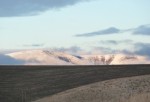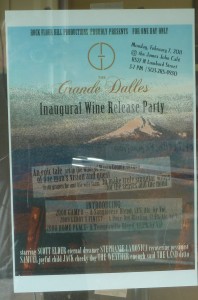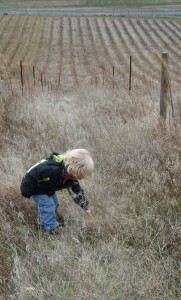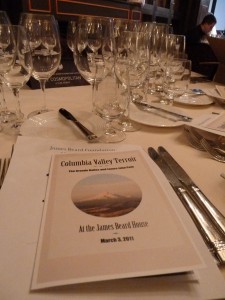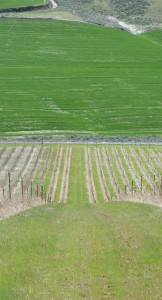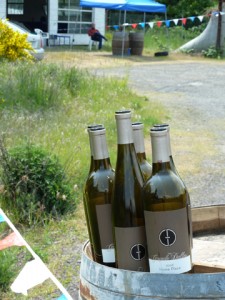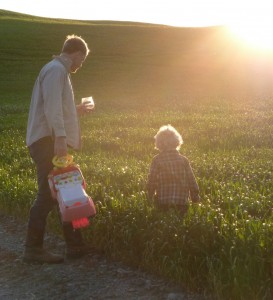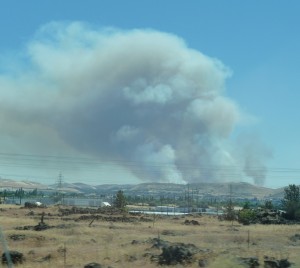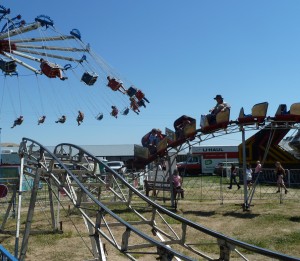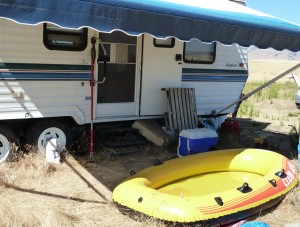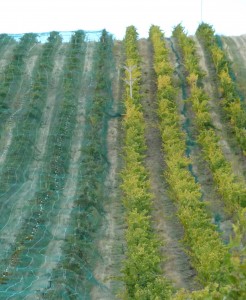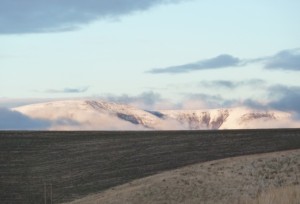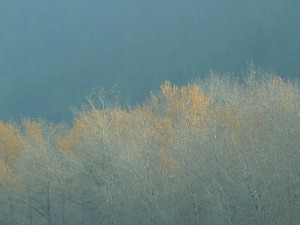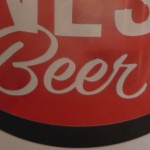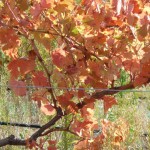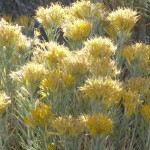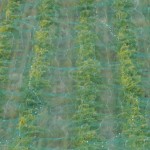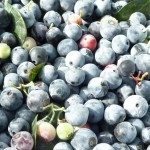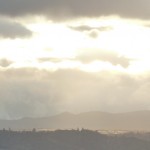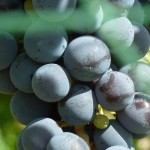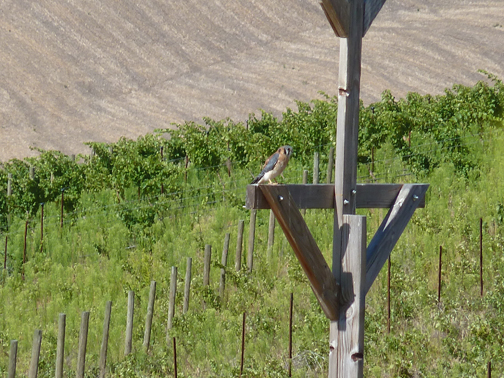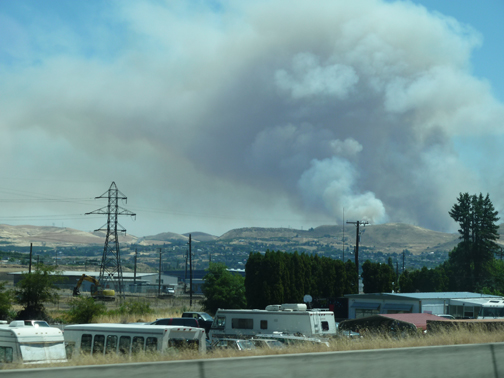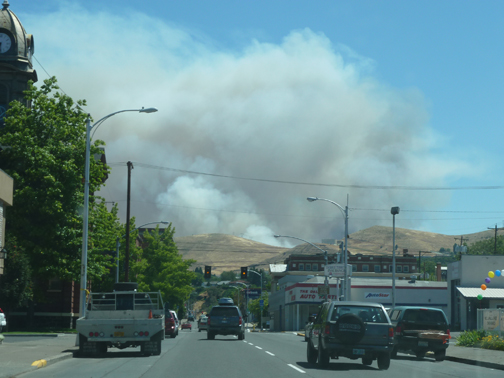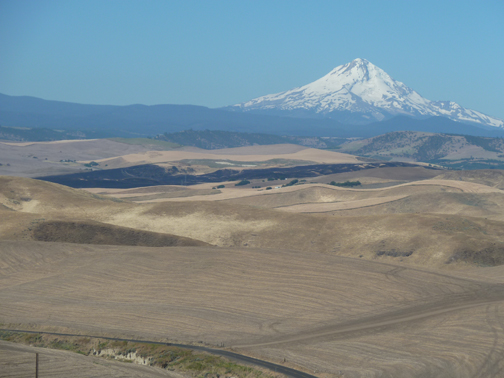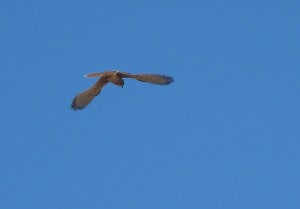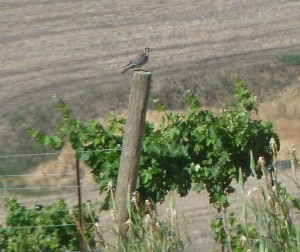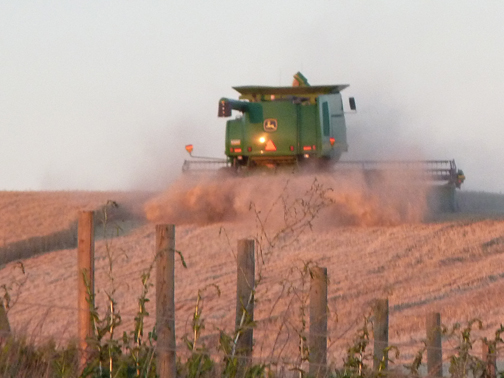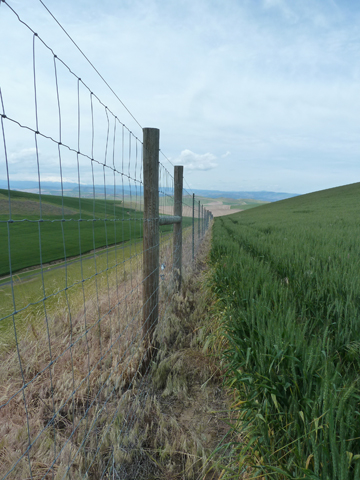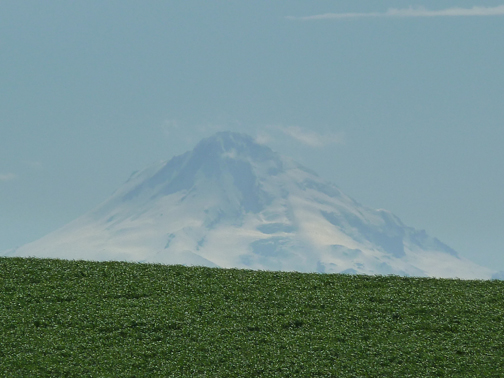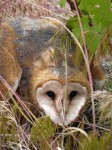
“I have something to show you.” Out at the vineyard, a crazily windy day, Scott was doing some farming while Sam and I loitered along a section of the road that was nestled down between the hills and out of the wind, playing Sam’s freshly invented rock toss games.
“What?”
“Jack found an owl in the vineyard. I don’t know if it’s still there. I must have walked right by it, but then Jack found it. It was there, it’s big round face peeking at me, and its wings out.”
“Where is it?”
“In the vineyard. I’ll show it to you after I’m done.”
And off he went, leaving me to my racing thoughts. An owl in the vineyard! In daylight. It must be hurt. It has to be hurt. Why didn’t it fly away? What are we going to do? I hope it’s flown away, was some fluke thing, but in the daylight! On the ground.
Oh, was my heart pounding loudly while Sam and I made our way back up the hill, remembering that windy day when we found the flicker. Today, though, despite the excitement, emotionally I felt calm enough, something I didn’t remember feeling back when I headed down the hill toward the birdnet-wrapped flicker. Maybe my skin was toughening up, out here on the farm? Because now, the simple resignation that we’d have to figure out a course of action IF the owl was still there was what propelled my thoughts as we plodded toward the hill’s top. It seemed the practical had replaced the emotional, to some degree.
Back at the camper, I started to look for Oregon Fish and Wildlife on my phone in case the owl was still there, hurrying, hurrying, so I’d be ready when Scott came back. It seemed like forever, but I found it, and wrote it down. Scott had just come in and waited for me to finish. We all got in the car and headed down the vineyard road. Leaving Jack inside, we–Scott, Sam, and myself–got out.
As we stepped into the vineyard, the wind howling around our ears and pulling at my hat, I was rather nervous. But still calm, I had to be; we didn’t even know if the owl was still there, and if it was, we all had to stay quiet. A ruckus would not help anything. As we made our way down the hill, Sam wondered about the owl, and Scott was telling him something, I don’t know what it was because I was thinking too much of what we might find.
We walked some 15 yards or so down a row. “See where that matted grass is?” asked Scott. “That’s where he was.”
For a brief moment I was somewhat relieved. It had flown away! Until I saw a little face one row over to the east peeking under the wire.
A barn owl. And it was still there, with its wings out, in what appeared to be a menacing posture the more we looked at it, but it was not flying anywhere. We stayed for a few moments, me snapping some pictures, trying to see if the wings looked mangled or it looked mangled somewhere else or anything that might help me pin down and understand why that guy was there, and describe the situation to whomever I spoke with next on the phone. I had never been so close to a barn owl, and marveled at that strangeness of this little one’s face; the triangle of white, the blackness of its eyes. And its beauty. The dark spots on its back and wings jumped in the light, and its gentle buff color was a perfect disguise for the grasses it was now in. We didn’t stay too long, we didn’t want to bother it any more than we had to, and anyway, now we knew: we had a barn owl on the ground that could not fly, and we had to figure out what to do; we weren’t just going to leave it there.
Back in the car I dialed Oregon Fish and Wildlife, but, it being Saturday, reached no-one. So I called the Oregon State Troopers as recommended by OFW and told them my owl story. They took the information, and the gal told me a volunteer would be calling me back sometime. I questioned the experience of the volunteer and how long I’d have to wait and hung-up satisfied knowing it was an Audobon-type rescue person. Now I had to wait for a call back. And there it was. Not the volunteer, but the State Troopers, relaying the number for a more local wildlife rescue spot in Rowena, Rowena Wildlife Clinic, just down the Columbia River a few miles from The Dalles. I called them and got the answering machine, suggesting if I had an injured animal that I try to capture it and put it into a padded cardboard box! My message relayed I would not try to do this, please call back.
For a few minutes after leaving the message, Scott and I thought about how we might capture the owl; I had rounded up an injured duck once, gently securing it in a blanket before placing it in a box and hauling it off to the Audubon Society Wildlife Care Center in Portland, and had done the same thing for a young Scrub Jay, too. But an owl? With talons and sharp beak? No, we needed professionals on this.
Of course Sam was getting hungry now, it was well past lunchtime, and he had forgone breakfast on the drive out to wait for MacDonalds to begin their lunch service (oh, the things that kid will do for a cheese burger), so he and Scott headed to town and left me and Jack on the hill in the camper, waiting for a phone call.
Antsy, I looked up Portland’s Audubon Society number, to talk to SOMEONE and try to figure out more about our owl. And I’m glad I did. The gal there asked me about its wings and if one seemed to be hanging. The wings seemed to be fine, I told her. She told me it could be the owl was simply eating. In the daylight? I asked. She said if an owl doesn’t get enough to eat at night, they’ll hunt in day. I told her we had plenty of rodents on our hill, and I wouldn’t think that would be the case, but what did I know. She asked about any downy plummage. I told her I noticed the chest feathers blowing in the wind, but maybe it was just because it was so windy and not because of them being downy. She said if I could send some pictures it would be a great help. So after hanging up, off I tramped to look for our owl again.
I found him, wings no longer outstretched, but now tucked close to his body.
He was hunkered down under a vine, next to a post. For a minute or so he didn’t even seem to notice me, but then lifted his head. I spoke to him, and saw his eyes readjusting toward me. Just a little bird, it looked like. I also noticed more downy feathers. I got what pictures I could on my iphone, nothing too exciting because I didn’t want to get too close; the grasses were also blowing wildly. Back at the camper I sent one then called Audubon again, to update the goings on of the little owl.
We chatted briefly, I told her about the downy plummage, and then there was an “a-ha” moment. It’s possible, she told me, that this was a fledgling. Barn owls, she said, spend around 2 weeks on the ground after they leave their nest, because they can’t fly. Where would this guy come from, then? I asked her. Do you have an out building where they might nest? she asked. Nope. Well, she said, this guy hopped from somewhere. We hung up, she telling me the expert would get back to me sometime, but that it was a busy day at her center.
So it might be a baby. Where did it come from? We had a number of owl houses in the vineyard, boxes we had put up to help entice owls for rodent patrol. Could it be finally a family had moved in? I looked out the camper window and sure enough, there was an owl box not far from where Scott had found the owl. I headed out again.
What a grand surprise. The base of the pole on which the box is attached was littered with owl pellets. I looked up at the box, the sun in my eyes as I peered toward the hole that faced eastward, out of the wind. And there was something looking back. An owl.
That was it. Our guy was a young barn owl who had left the nest. I was thrilled. We had owls, and what we had stumbled upon was just a part of the life-cycle of this beautiful creature.
I went back to the camper and since I had not heard back from the Rowena Wildlife Rescue Center, I called them again, with hopes of talking to someone more local, probably for more verification of this new discovery. I got through. I chatted with Jean a bit, and I felt comfortable enough with the idea of leaving the owl now, knowing it was a fledgling, but I wanted to be to be as close to 100% sure he was OK to leave. The big thing in my head was to try and see if the wings were ok. I had asked Scott what felt like a million times that day TO HIM if he was CERTAIN both wings were extended when he first saw the owl. “How many times do I have to tell you they were?!” he would exclaim. So I told the Jean about the wings being out the first time, the hunkering down the second time I saw it. We discussed me going back and trying to coax some more defensive behaviour, just to check its wings. She told me other than the spread wings, a barn owl would jump backward and try to show its talons, and possibly screech. She had to go because she was just about to perform surgery, but told me she’d listen for my message with what I found.
I headed out again. The little guy was still hunkered down. I edged closer and closer. No defensive behaviour, but the swinging of his head back and forth and up and down. By this time Sam and Scott had come back and came down the hill to find me. We all sat near the little owl. Scott spoke to it this time, and told him we wouldn’t hurt him, and how glad we were to have him there. Sam didn’t seem to really care one way or another. I got more pictures then headed back to the car to call Rowena with my update. It wasn’t long before Jean called me back, and said what I described sounded perfectly normal.
So there you have it. Tear have finally come to my eyes as I write this and think about that little one, alone out in our vineyard, still within sight of his Mama, but still. In the end, we collected as much information as we could, spoke with experts, and made our decision to leave him on the hill. But oh! such a small, fragile life! Of course I worried all the way back to Portland and then last night about him. We have coyotes near the vineyard and I’m sure fox are around as well. Then I read Great Horned Owls will hunt these little guys. And I’m already nervous about the bird netting we ensconce the vineyard in when the grapes ripen. All I can do is keep my fingers crossed that it’ll all be OK. And smile for the new little owl life and his family, out there on our hill.
[If you ever find a hurt or “misplaced” animal in the wild, click here for some information that can help, from the Rowena Wildlife Clinic, in Mosier, Oregon]






